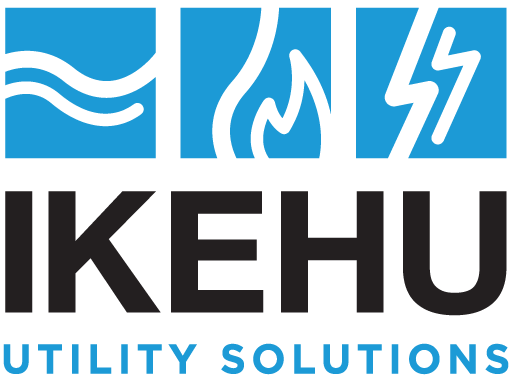Multifamily Utility Company is dedicated to the environment and promoting various conservation efforts. Until recently many national, state and local conservation programs have been promoted by utility providers in their monthly bills. If these bills are paid by an owner, manager or association then the end user never receives these messages. We are dedicated to doing our part in ensuring the end users receive these messages!
“Thinking Green” is about developing and creating a lifestyle based on environmentally friendly habits which reduce the amount of energy and natural resources you use on a daily, weekly, monthly and annual basis. All households rely on natural gas to meet basic every day needs. This includes heating, cooling, and cooking. Each day you use natural gas to perform daily tasks. Recently, the price of natural gas has risen. Many households are looking for ways to reduce the monthly cost of natural gas. By practicing prudent conservation, you can reduce the amount you pay and save on natural gas.
Gas Conservation Tips
Gas Conservation Appliances
- When cooking with gas set timers to minimized cooking time
- Every time you open your oven door during cooking, you lose 5 to 7 degrees or more.
- Check the seal on your oven door to see if there are cracks or tears in it
- Develop the habit of “lids-on” cooking to permit lower temperature settings.
- Keep reflector pans beneath stovetop heating elements bright and clean.
- Carefully measure water used for cooking to avoid having to heat more than is needed.
- Begin cooking on highest heat until liquid begins to boil. Then lower the heat control settings and allow food to simmer until fully cooked.
- Cook as much of the meal in the oven at one time as possible.
- Rearrange oven shelves before turning your oven on – and don’t peek at food in the oven!
- Every time you open the oven door, 4°-5° C is lost.
- There is no need to preheat the oven for broiling or roasting. When preheating an oven for baking, time the preheat period carefully. Five to eight minutes should be sufficient.
Natural Gas Conservation Heating
- Don’t switch your thermostat to a higher setting when you first turn it on. It won’t heat your home any faster and it will waste energy when you forget to turn it back down.
- Take advantage of the sun’s natural heat. On sunny days, leave blinds and draperies open to let the sun’s rays warm your home.
- Maintain you’re heating and cooling equipment through a Planned Maintenance Program, which should include filter changes, heat exchanger cleaning, and fan coil cleaning.
- Be sure furniture, rugs or draperies don’t block central heating registers.
- Monitor thermostat settings regularly. Programmable thermostats our an economical investment and cost effective way of conserving energy
- Utilize ceiling fans where available. Ceiling fans save energy in reverse as this pushes warm air caught near the ceiling down to where you can feel it.
Natural Gas Appliance Energy Use
Take a look to see how many therms of natural gas these appliances use on average.
Appliance
Water Heater: 24 therms/month
Range: 2 therms/month
Dryer: 5 therms/month
Gas Grill: 0.23 therms/use
Gas Logs: 3 therms/8 hours
Reducing Summer Cooling and Electric Bills
- Reduce air conditioning usage and related energy bills easily. Clean or change filters regularly, and install a programmable thermostat or timer. This allows the AC to remain off while the house is empty and still cool down the house shortly before family members return home – without wasting money and energy all day. (It will come in handy in cold weather, too, to reduce home heating bills.)
- Ceiling and other fans provide additional cooling and better air circulation, so you can raise the thermostat and cut down on air conditioning costs without sacrificing comfort.
- Consumers can save up to 30 percent on their home energy bills by choosing Energy Star-labeled appliances, lighting, windows, office equipment, air conditioners, furnaces, and home electronics. Energy Star is the symbol for energy efficiency for products certified by the Department of Energy and the Environmental Protection Agency. An Energy Star clothes washer uses less water and energy, for combined savings of up to $120 a year.
- Switch to cold water washing of laundry in top-loading, energy-inefficient washing machines to save energy and up to $63 a year—detergents formulated for cold water get clothes just as clean.
- Improving central or room air conditioning? A Seasonal Energy Efficiency Ratio (SEER) of 12 or higher on your central AC system means it uses 20 percent less electricity than a standard new unit, for summer savings of about $600 over the system’s lifetime. Look for the Energy Star label on an individual room unit, and be sure it’s the right size for the room, to ensure efficient and effective operation and dehumidifying.
- Refinancing your home to take advantage of lower interest rates? Consider wrapping in energy-efficiency home improvements that would reduce your monthly energy bills. Interest would be tax deductible in many cases.
- Light up your life – efficiently. Replacing four 75-watt incandescent bulbs with 23-watt fluorescent bulbs (CFLs) that use about two-thirds less energy and last up to 10 times longer saves $190 over the life of the bulbs. If all our nation’s households did the same, we’d save as much energy as is consumed by some 38 million cars in one year.
- Keep those intense afternoon rays from heating up the house by planting leafy trees and vines around your home, installing reflective tiles on your roof, and/or installing window treatments: blinds or shades inside, trellises or awnings outside.
- Choose safer, efficient Energy Star torchiere lamps instead of heat-producing halogen torchiere lamps, which can CAUSE FIRES, according to the U.S. Consumer Product Safety Commission. While relatively inexpensive to purchase, they are expensive to operate.
- Waste not, want not. When they are not in use, turn off lights, TVs, stereos, computers. Activate “sleep” features on computers and office equipment. Consider motion detectors and sensors for your indoor and outdoor lighting.
- Check your refrigerator – it runs 24 hours a day. Clean the coils to reduce your energy bills and improve the life of your refrigerator.
- Give your water heater a vacation. When you go on vacation or are otherwise away from your home for a while, put your gas water heater on a vacation setting to save money and energy.
Reducing Winter Heating Bills
- Consumers can make their heating systems operate better and longer by having an annual professional “tune up” and by cleaning or replacing filters once a month.
- Weather stripping and caulking are great ways to cut heating costs by plugging up energy “leaks.”
- Properly insulated attics, walls, floors, basements, and ceilings can prevent loss of up to 20 or 30 percent of your home’s energy. Appropriate insulation will not only reduce your heating bills, but also lower your summer cooling bills.
- Use foam gaskets to seal leaks around light switches and electrical outlets on exterior walls.
- In colder climates with a significant heating season, energy-efficient windows retain more heat, permit less air leakage, and provide warmer window surfaces for improved indoor comfort. Ask your supplier for ENERGY STAR certified windows with double panes and low-emissive coatings so you can star gaze in comfort this winter.
- Allow the sun to help heat your home by keeping blinds of sun-exposed windows open in the daytime; close them at night for maximum heat retention.
- Consider planting evergreen trees on the north side of your home to block winter winds.
- If your home is powered by natural gas, make sure that you have a high-efficiency gas furnace, water heater, and cooking equipment.
- Replace continuously burning pilot lights with electronic ignitions to save gas in fireplaces, ovens, ranges, and outdoor lighting systems

